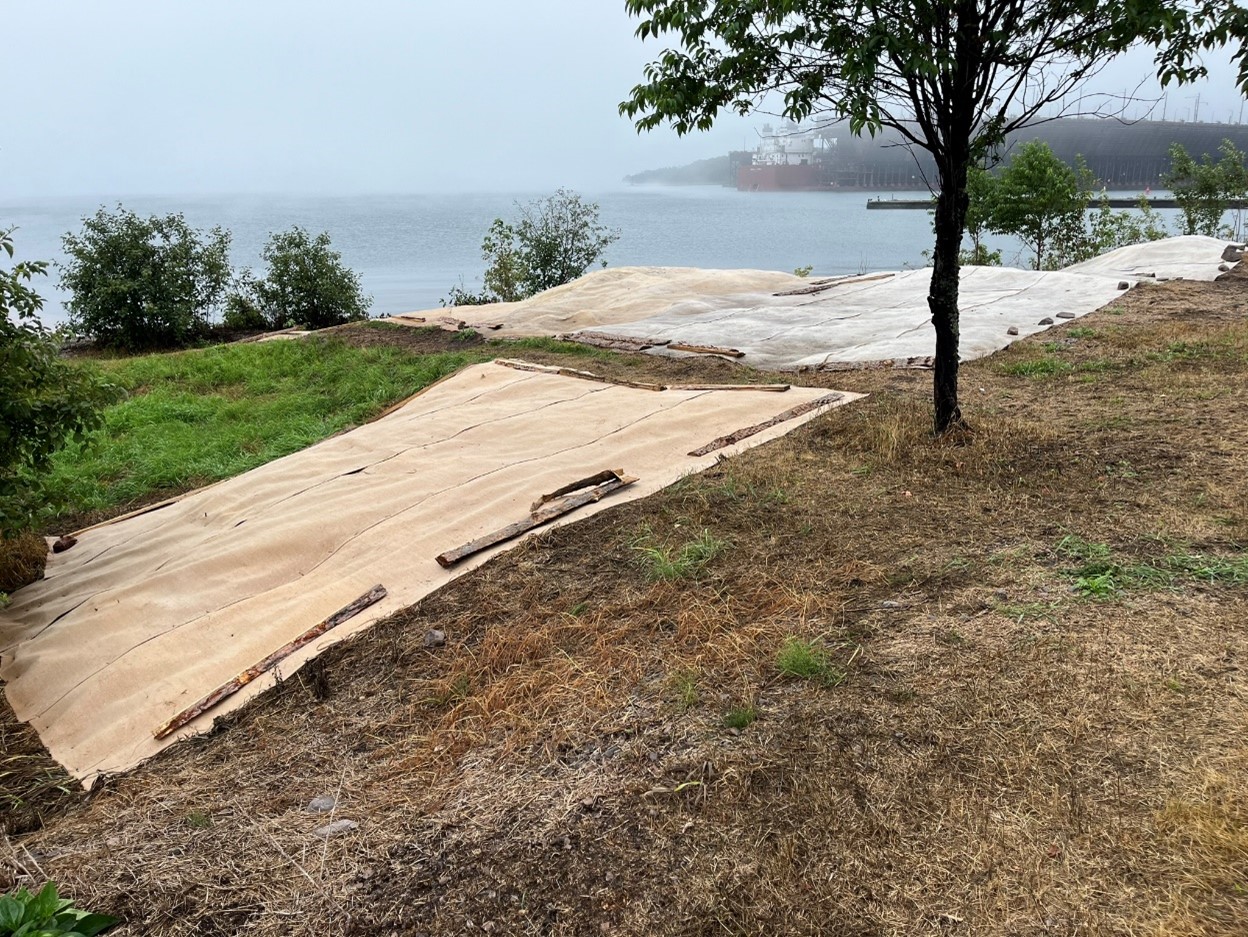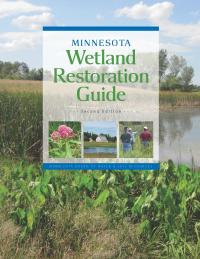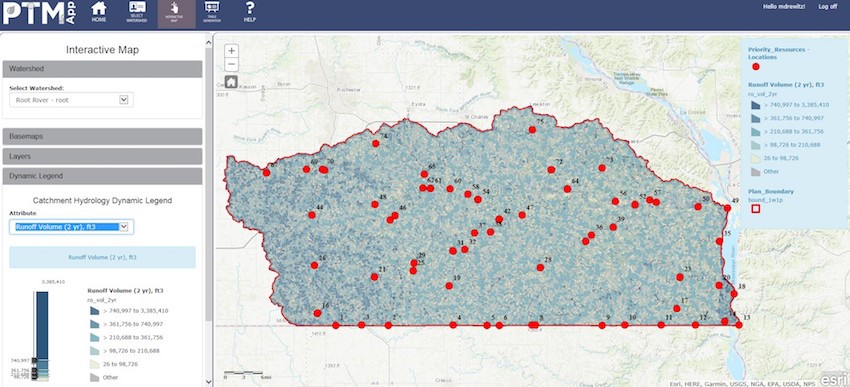What's Working for Conservation
Conservation Planning
2025 Information
Addressing Habitat Project Challenges

Climate change and increasing pressure from invasive species are creating the need for adaptive management and creative solutions for habitat projects. The Agate Bay Native Habitat Project is located along Lake Superior in Two Harbors and the Lake County Soil and Water Conservation District is coordinating the project. This site is of high importance for many pollinators and migratory bird species, but was dominated with invasive species including common tansy, reed canary grass, Tartarian honeysuckle, and Canada thistle. To test non-herbicide methods promoted as part of the BWSR’s HELP grant black plastic was used to suppress invasive species. This method was successful in some areas but a lack of snow and winds from large storms made the practice unsuccessful in other areas. As a result, herbicide treatments were conducted in some locations, but were also hampered by unusually wet and windy conditions. The removal of invasive species was eventually successful but took dedicated effort. Butter and eggs (Linaria vulgaris) established at the site after other invasive species were removed but is being managed with a biocontrol insect (and herbicide). The establishment of plants was also challenging due to unusual weather conditions. The installation of plants was delayed due to the timing of a federal grant, and this was followed by severe drought. As with the invasive species control plans were adapted and pumps were used for watering to save as many plants as possible. Many of the plants were installed through a wood-based fabric that helped retain some moisture. Geese and deer also started eating the native plants, requiring the installation of fence. A BWSR pollinator plot seed mix was also installed to supplement establishment. The adaptive approaches were made possible by a few different funding sources (Coastal Grant Program, BWSR HELP and 1W1P grants, and DNR CPL grant) and several partners including the DNR Coastal Program, DNR Parks Trails staff, MNL, Conservation Corps of Minnesota and Iowa, BWSR.
Key lessons from this project include 1) Contingency planning is needed due to extreme weather that is resulting from climate change. 2) Having multiple partners involved with projects can help with adapting to challenging conditions 3)The use of plastic has limitations in some conditions (plastic was recycled for use on another project) 4) This initial project led to a NOAA grant for engineering on the rest of Agate Bay, so continued dedication to projects can lead to further opportunities. 5) Project can take many years of adaptive management to be successful. Shrubs may be more beneficial in some areas than herbaceous plants where there is competition from species such as reed canary grass (Kari Hedin, Lake SWCD)
2016 Information
Importance of Restoration Plan Development: During recovery phase, restored ecosystems aren’t as resilient as their natural counterparts. That means they often don’t “bounce back” after disturbances and extreme events and are more susceptible to stresses, such as spread of invasive species. Intensive ongoing management is needed until ecosystems have developed their own self-reinforcing mechanisms. At least 5 years. Developing a written restoration plan is a professional “best practice” for all projects regardless of their size and complexity.
A good restoration plan has four core components: 1) descriptions of current conditions and problems that need to be addressed (including project area map), 2) specific project goals, 3) restoration approach/methods, 4) ongoing monitoring, management, and record-keeping protocols. Restoration teams that do not prepare their own plans run a greater risk of restoration project failure and results of low ecological value. Setbacks and surprises are common in ecological restorations. A management team must have the capacity to re-do critical steps (beyond funding issues) of the action plan or adjust the plan entirely. Responding rapidly to problems is often the most efficient way to counteract them. “Adaptive capacity”. For MN restoration projects three shortcomings, in addition to insufficient funds, most commonly hinder restoration teams’ capacity to keep their projects on track: inadequate staffing, incomplete records, and leadership change. Teams with demonstrated expertise to perform the work, that follow best professional practices, including developing written plans and keeping sound records, and that have the internal capacity to follow through on commitments, are more likely to avoid or adequately respond to setbacks during the course of restoration. Four factors are most important in determining the extent to which restorations will be successful (ecological quality): starting condition of the site, the kind of ecosystem being restored, the internal capacity of the restoration team, and whether the team wrote and followed their own plan.
(Advancing Ecological Restoration Practice in Minnesota – S. Galatowitsch, J. Bohnen, UMN 2016)
Restoration Plan Development: The development of detailed plans has been identified as one of the keys to successful restoration projects. A sample plan (pdf) for wetland mitigation projects can be found in an appendix of the recently completed Minnesota Wetland Restoration Guide that has an overall focus on effective planning and selection of practices that will lead to successful projects.
Performance Standards: Performance standards are typically required as part of wetland mitigation plans to define the expected outcome for a projects. A performance standard template (pdf) has been developed between state and federal agencies to help guide planning for mitigation projects.
Watershed Planning: A tool that provides science based information to support watershed planning and on-the-ground project implementation to help improve water quality in Minnesota was recently updated. PTMApp prioritizes water resources of concern based on scientific data, targets suitable areas for placing best management practices on the ground, and measures what effect those practices have on the water resource. Two components make up PTMApp: a GIS-based model that creates water-quality model outputs, and an interactive web application to view data via computer or tablet. The recent improvements to the PTMApp web application provide a stable platform for current users, and establish the building blocks for expanding coverage of PTMApp data across the state over time. For further information see the PTMApp page.



